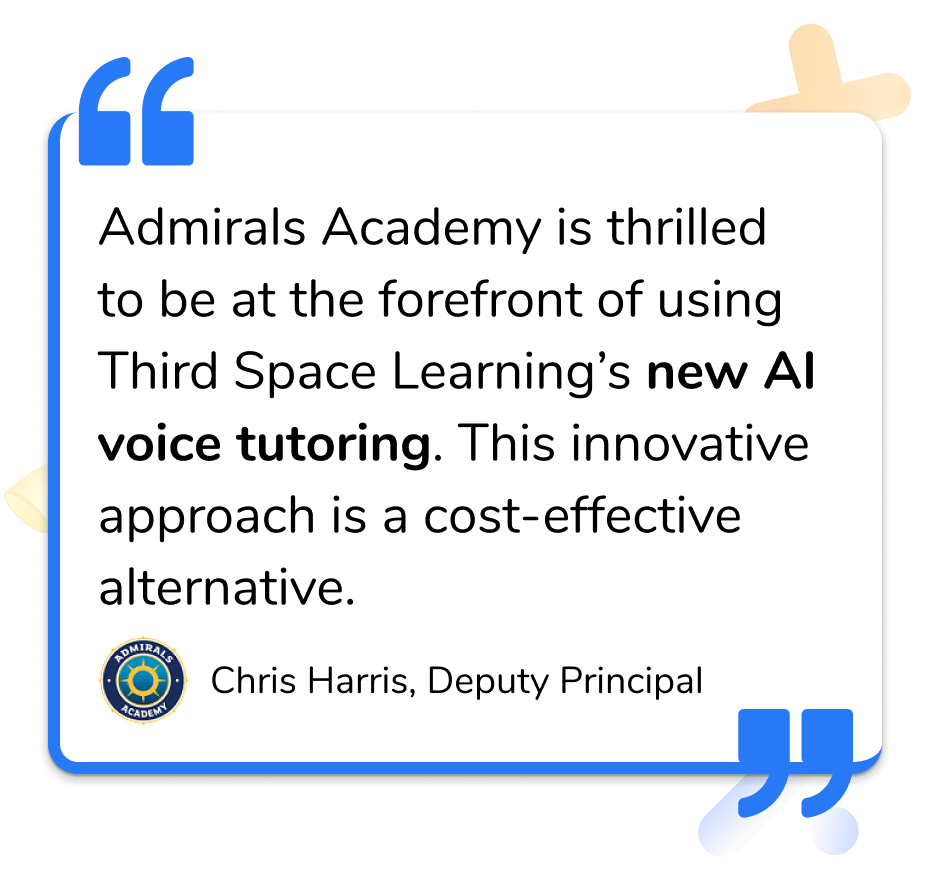EIGHTH GRADE MATH TUTORING
Prep 8th grade math students for complex high school math
8th grade math concepts and equations become even more advanced and if students don’t master them, they will struggle in high school.
In every math class, some students struggle to keep up without additional opportunities to practice and learn math skills.
Give these students the support they need to succeed in grade-level math and beyond with a regular one-on-one math tutoring program built and delivered by math specialists.
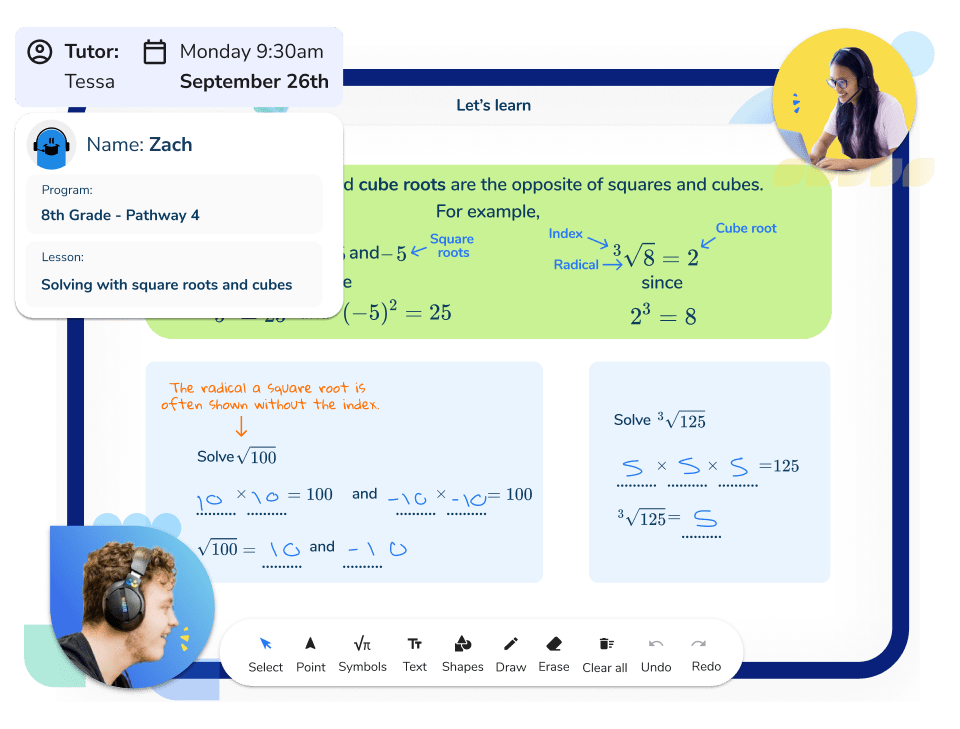
Third Space Learning provides one to one for a good value price. Students enjoy working with their private tutors – they describe them as lovely, friendly and helpful. The math topics are appropriate and fits with our curriculum.
Becky Cain
Cranborne Middle School
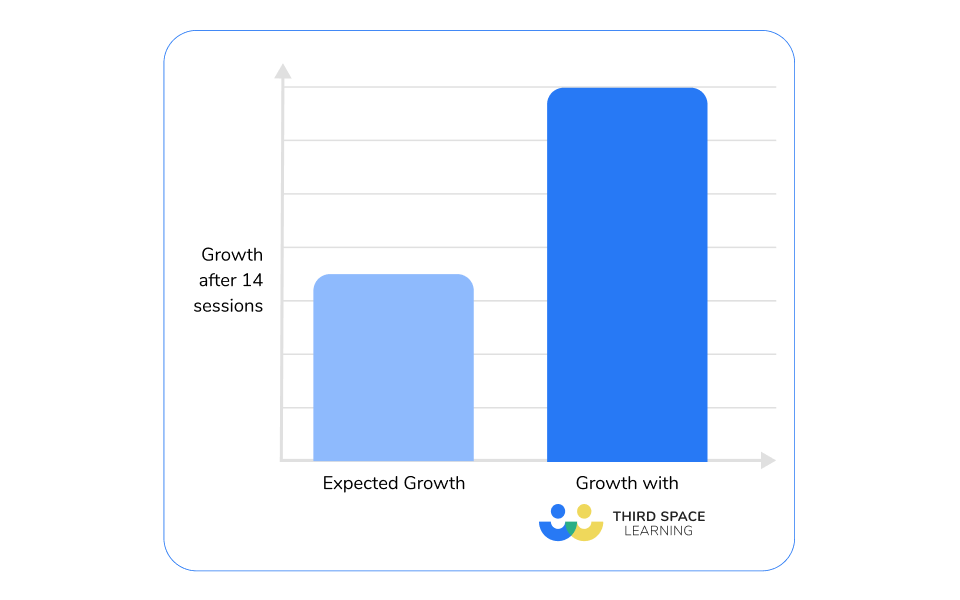
Benefits of 8th Grade Math Tutoring
Before 8th graders start high school, it’s essential to ensure they are confident with grade-level math concepts and math skills so they do not fall behind.
Enroling 8th graders in a math tutoring program provides the math help target students need to accelerate progress before the achievement gap widens in high school.
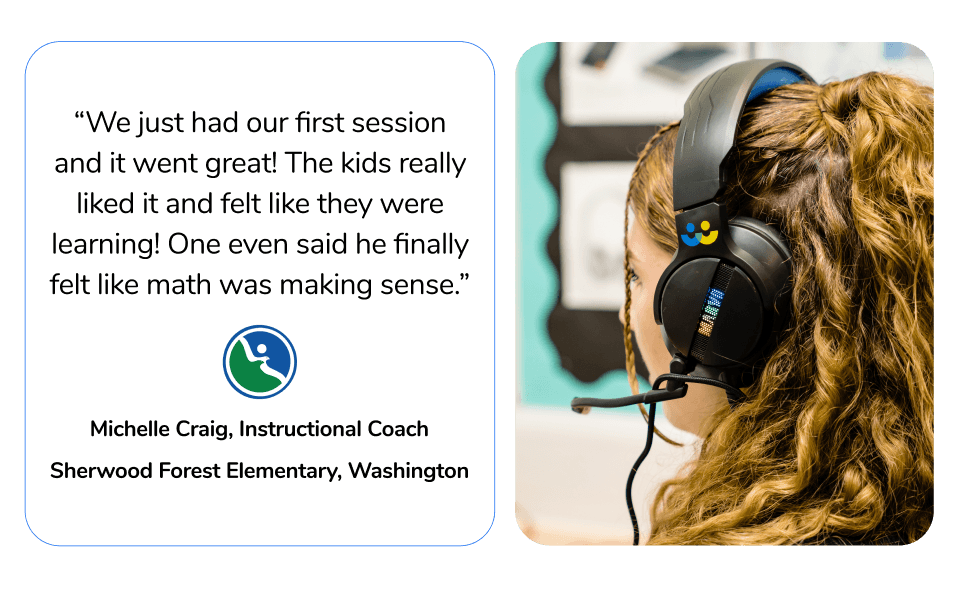
Develop problem solving
8th graders need to develop their problem solving skills and understanding of more complex word problems ahead of state test prep.
An online 8th grade math tutor provides extra math opportunities for 8th graders struggling to keep up with difficult math tests and math concepts.
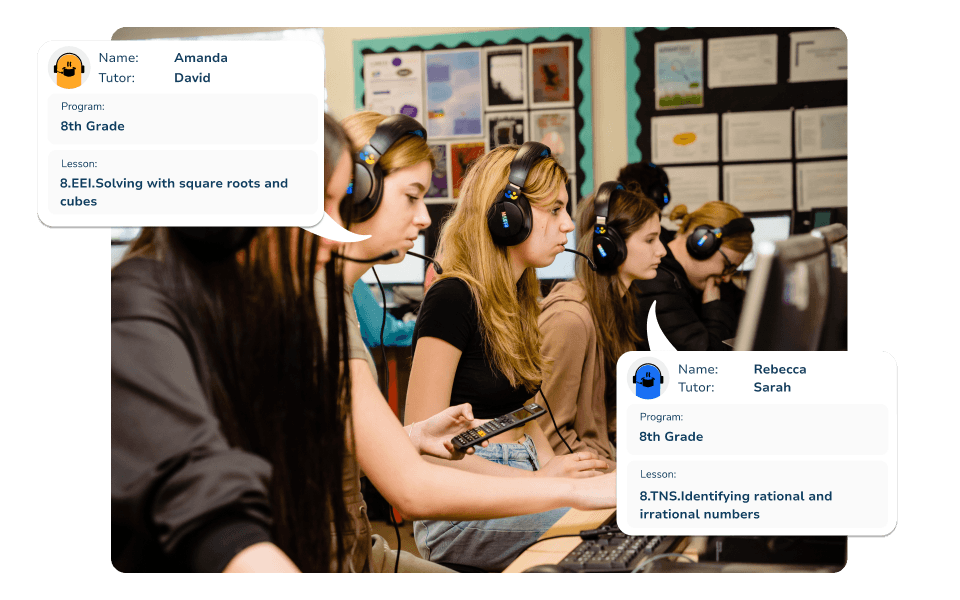
Individualized tutoring service
Often, eighth grade students benefit from different teaching styles but differentiating instruction for a whole class can be challenging.
Each student works one-on-one with a private tutor at their own pace and tutoring sessions are adapted in real-time according to the student’s needs.
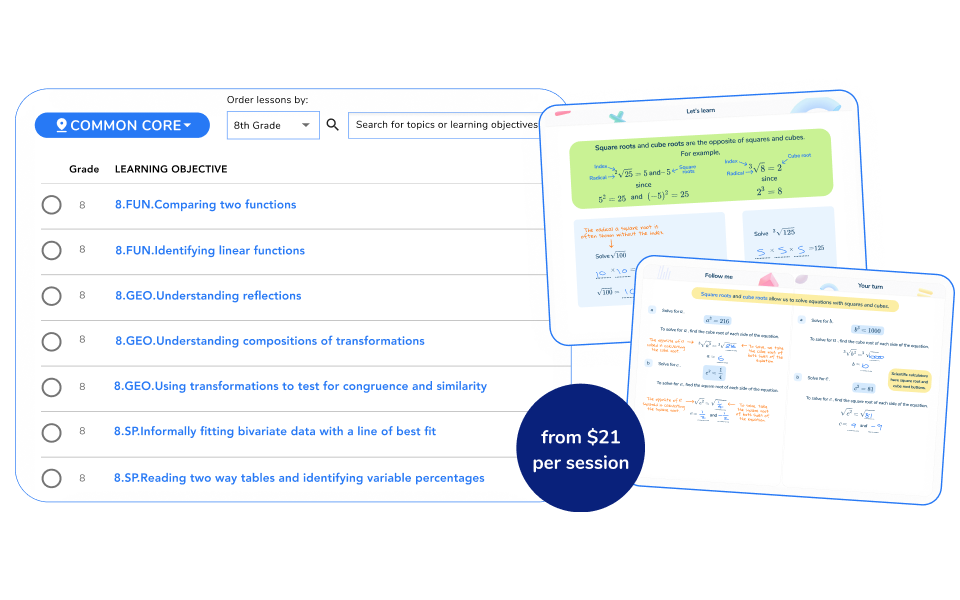
Expert 8th grade math tutoring
A team of expert math teachers creates all math lessons covering the 8th grade standards for every US state and Common Core.
Third Space Learning’s online 8th grade math tutors are STEM specialists, it’s like bringing in multiple high-quality interventionists into your school without the price tag.
Preview 8th grade math tutoring lessons
Preview 8th grade math tutoring lessons
Specially created lessons designed to build conceptual understanding and enable tutors to respond to students’ needs in real-time:
-
Example lesson 1
-
Example lesson 2
-
Example lesson 3
Identifying functions
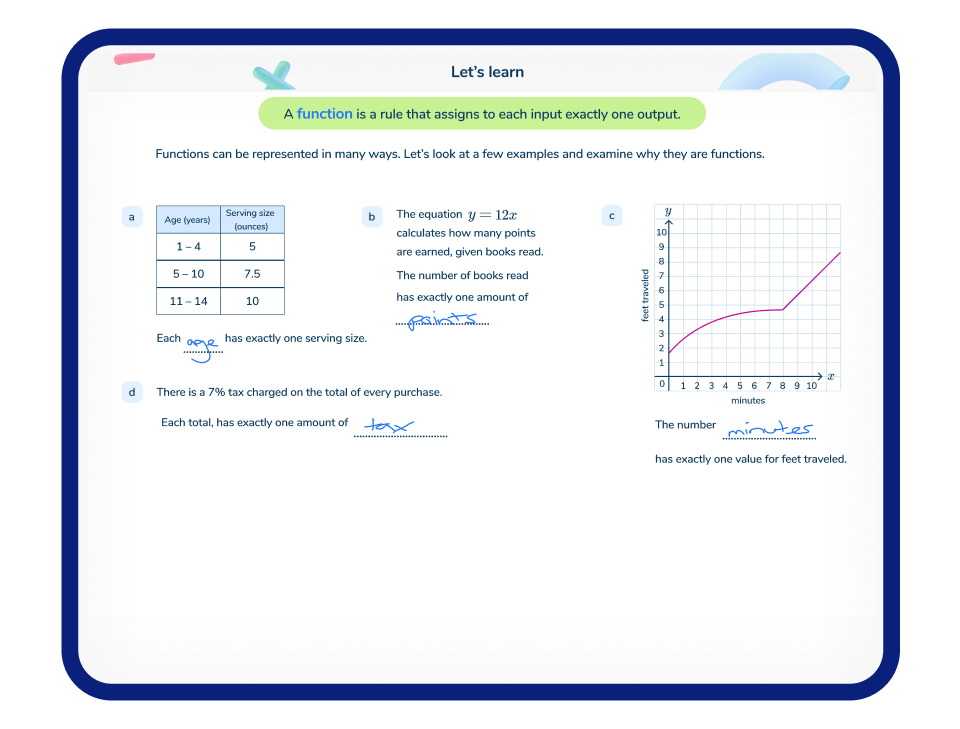
Let’s learn
The first question introduces each concept and helps students feel ready to learn
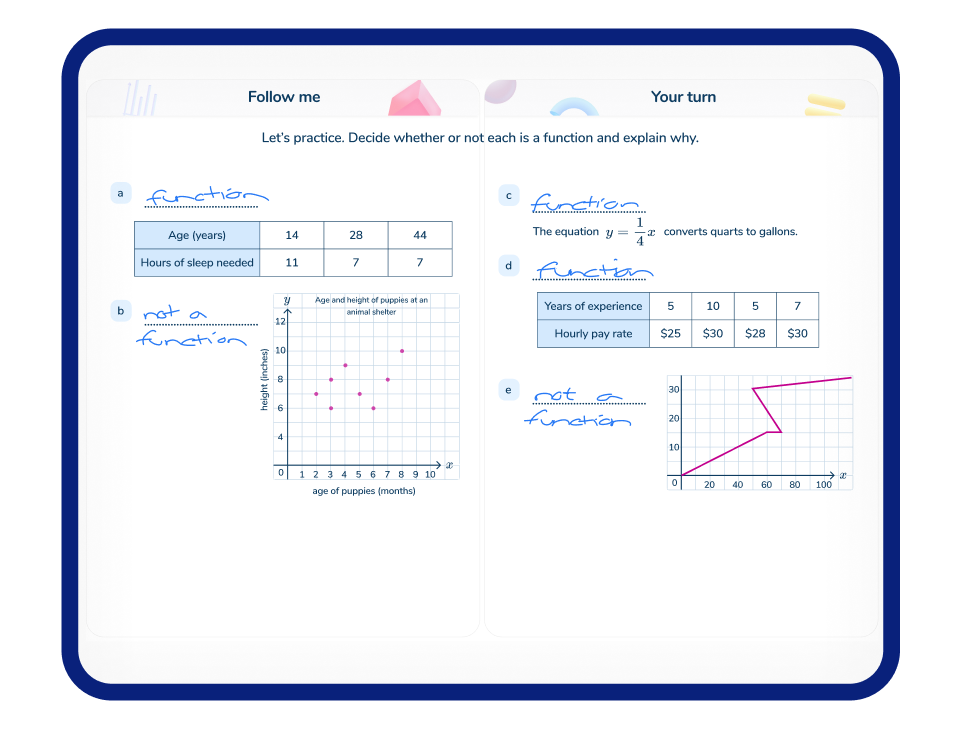
Follow me + your turn
Students work through a scaffolded example with their tutor before trying a similar question on their own
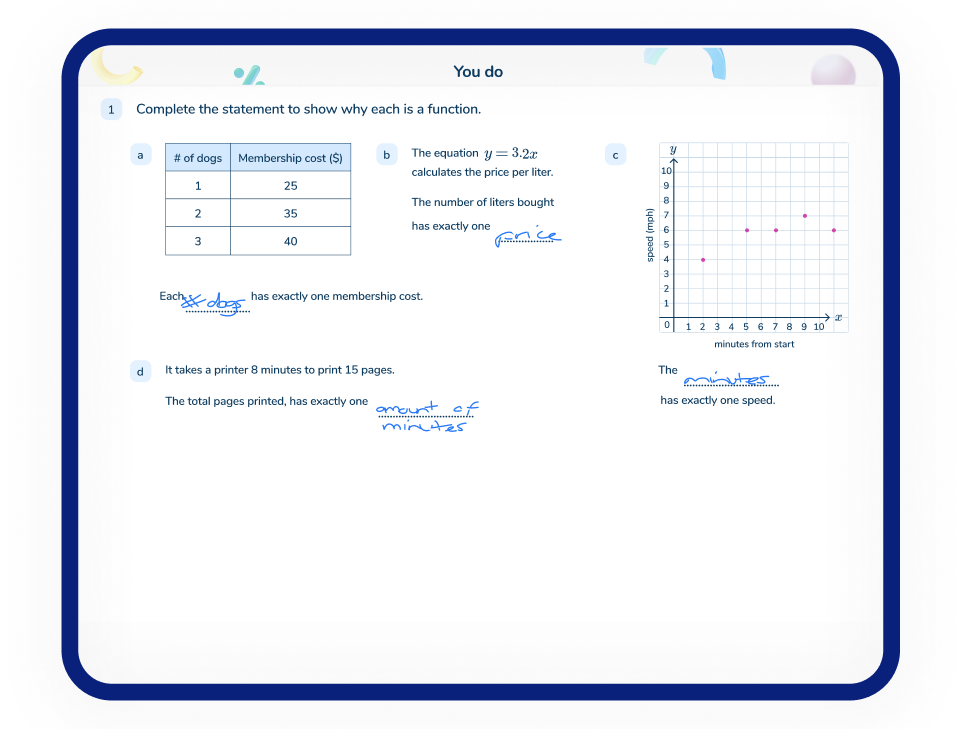
You do
A carefully sequenced next question ensures students can apply knowledge to different contexts
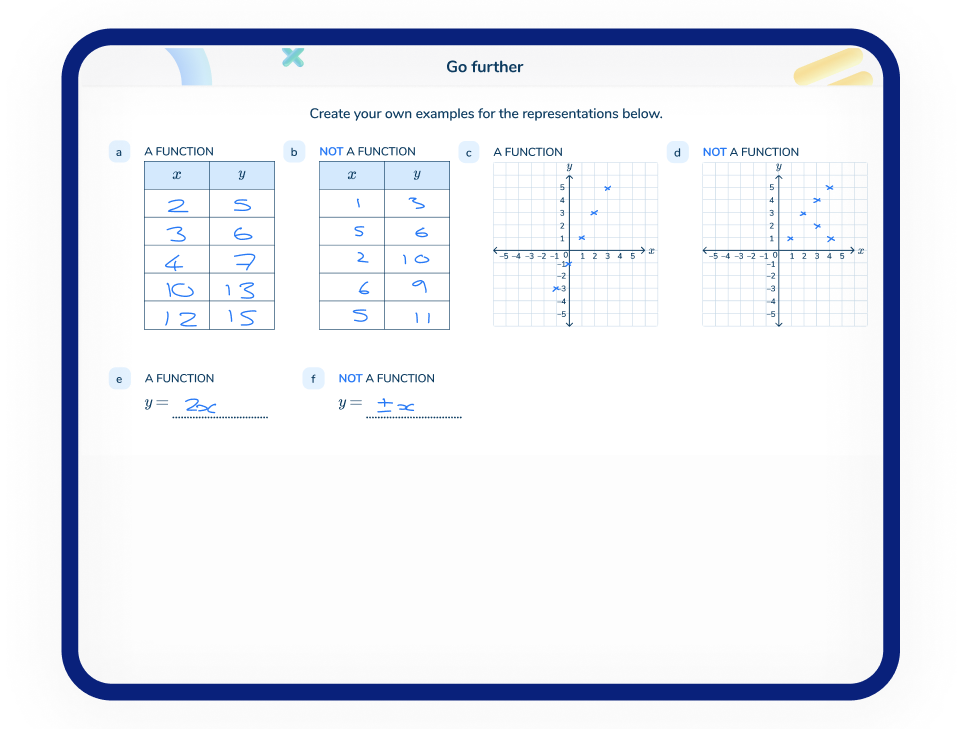
Go further
This gives students an opportunity to apply their knowledge to problem solving and reasoning questions
Solving linear equations
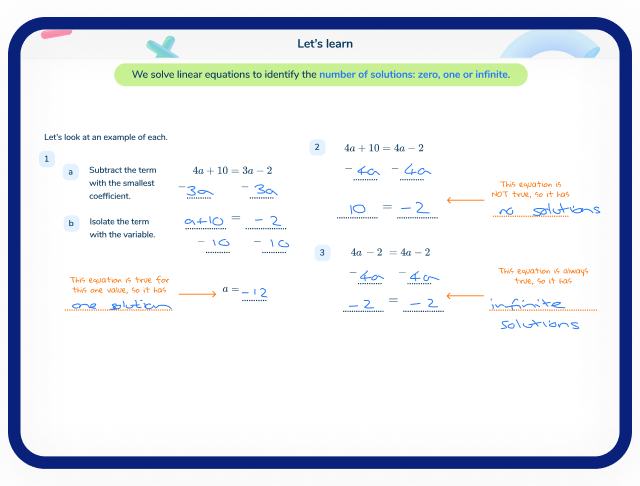
Let’s learn
The first question introduces each concept and helps students feel ready to learn
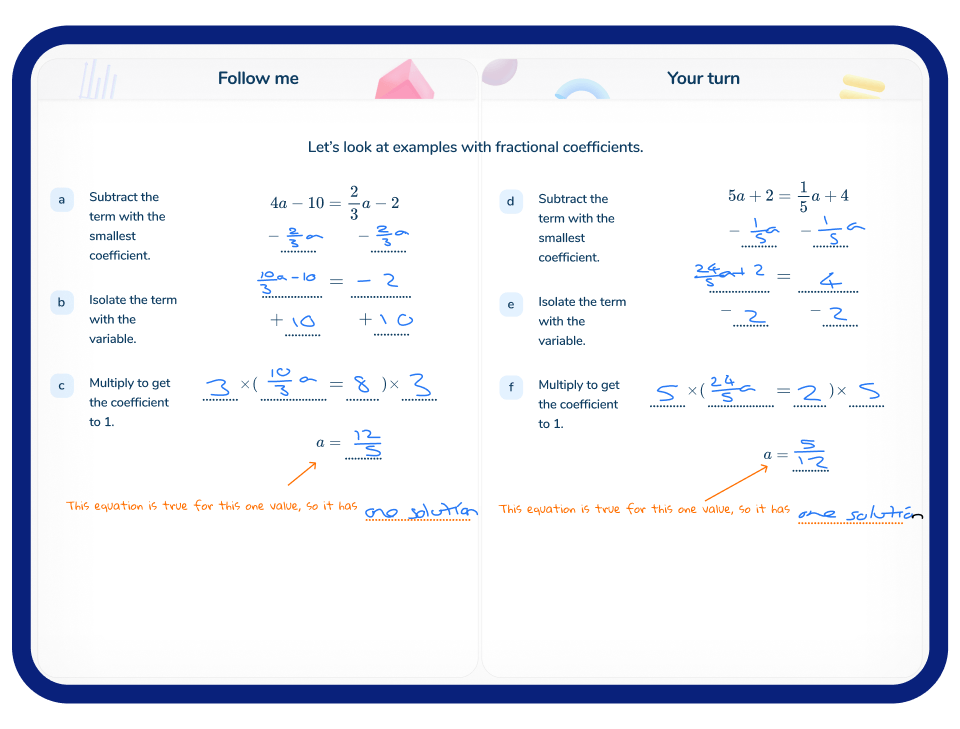
Follow me + your turn
Students work through a scaffolded example with their tutor before trying a similar question on their own
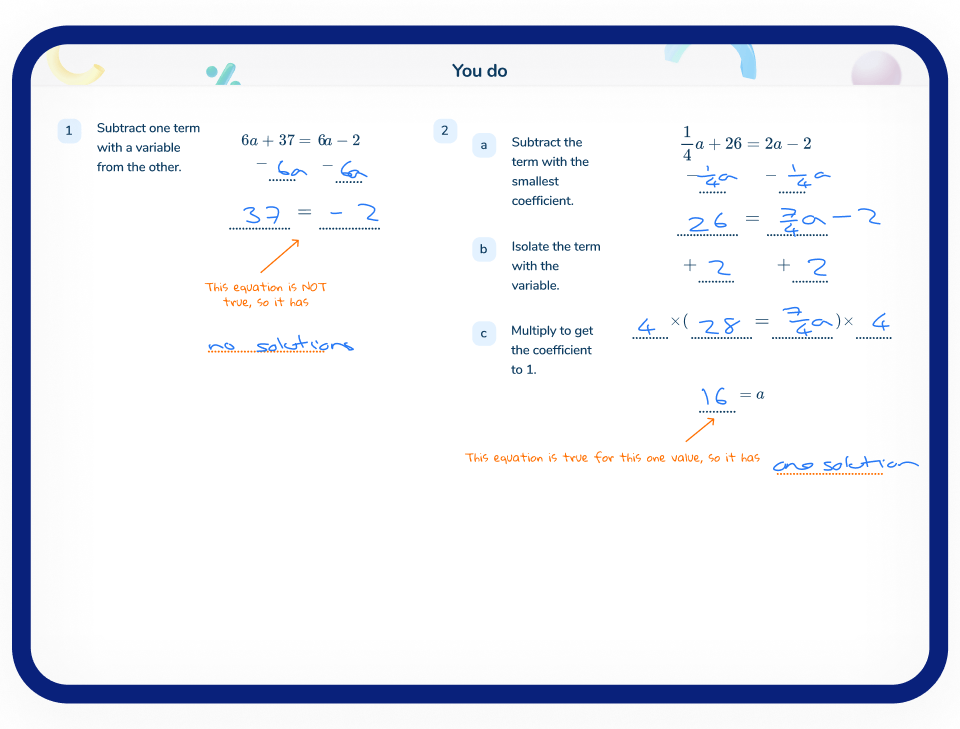
You do
A carefully sequenced next question ensures students can apply knowledge to different contexts
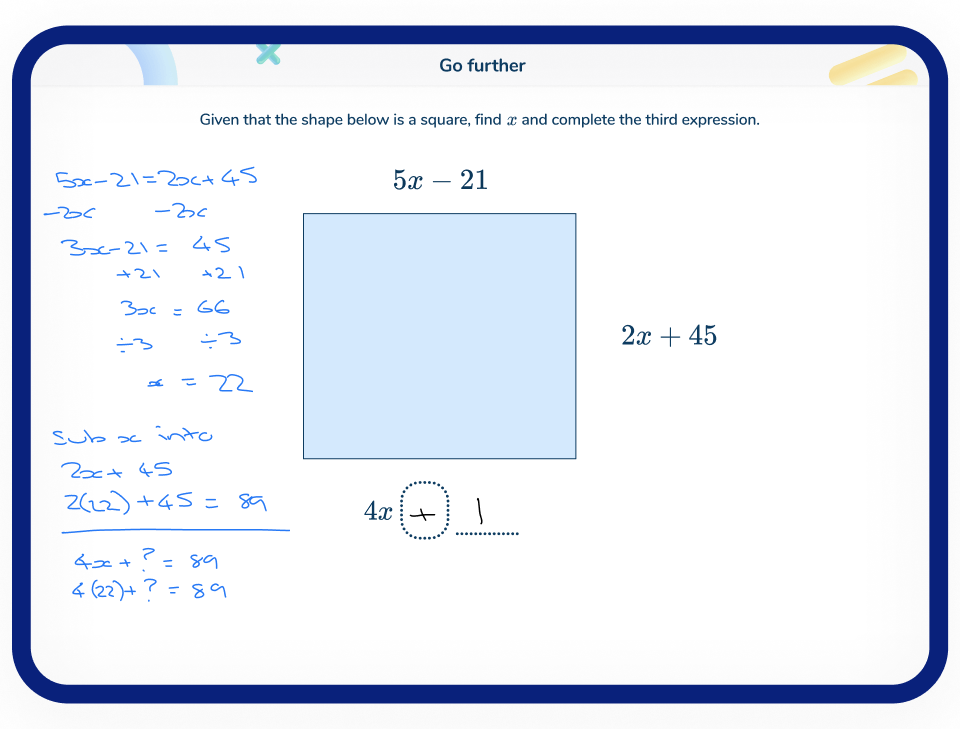
Go further
This gives students an opportunity to apply their knowledge to problem solving and reasoning questions
Solving with square roots and cubes
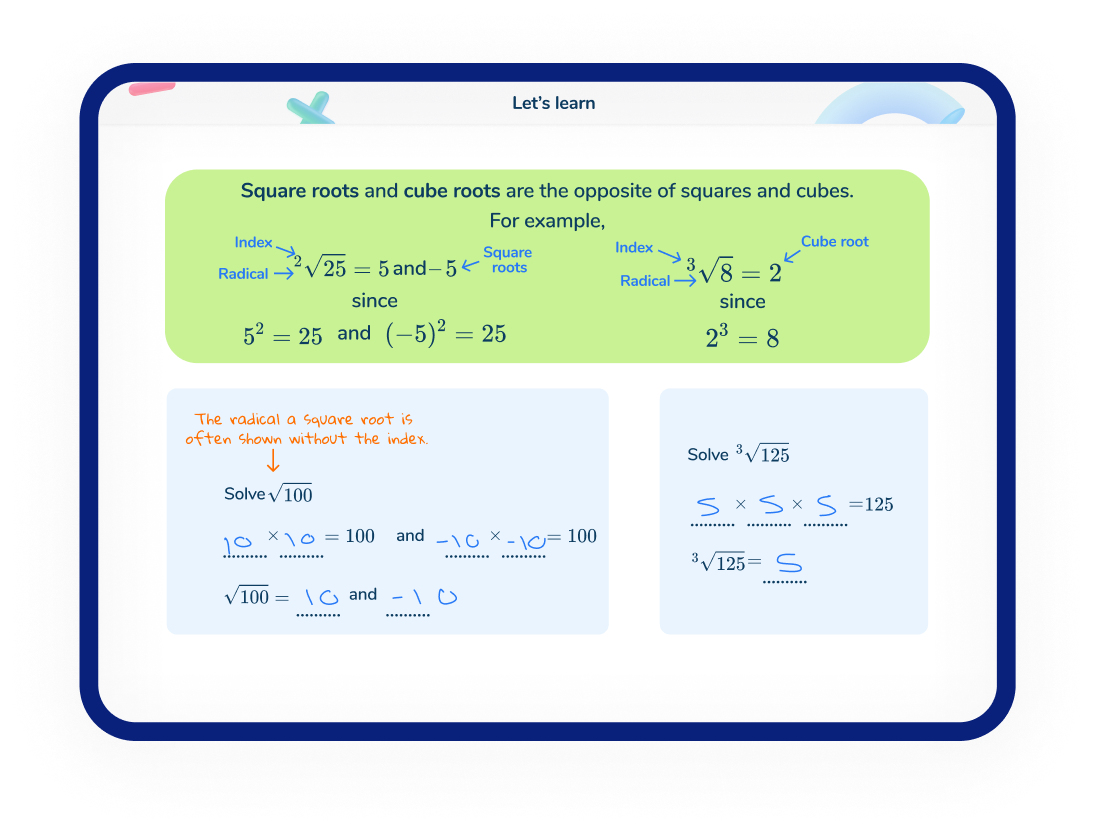
Let’s learn
The first question introduces each concept and helps students feel ready to learn
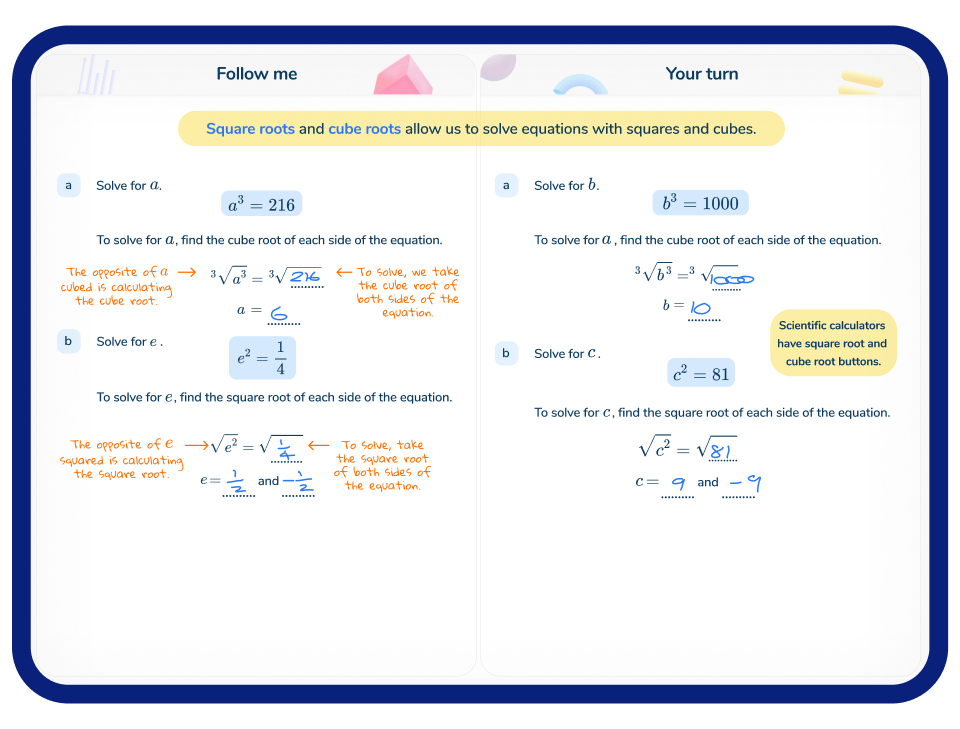
Follow me + your turn
Students work through a scaffolded example with their tutor before trying a similar question on their own
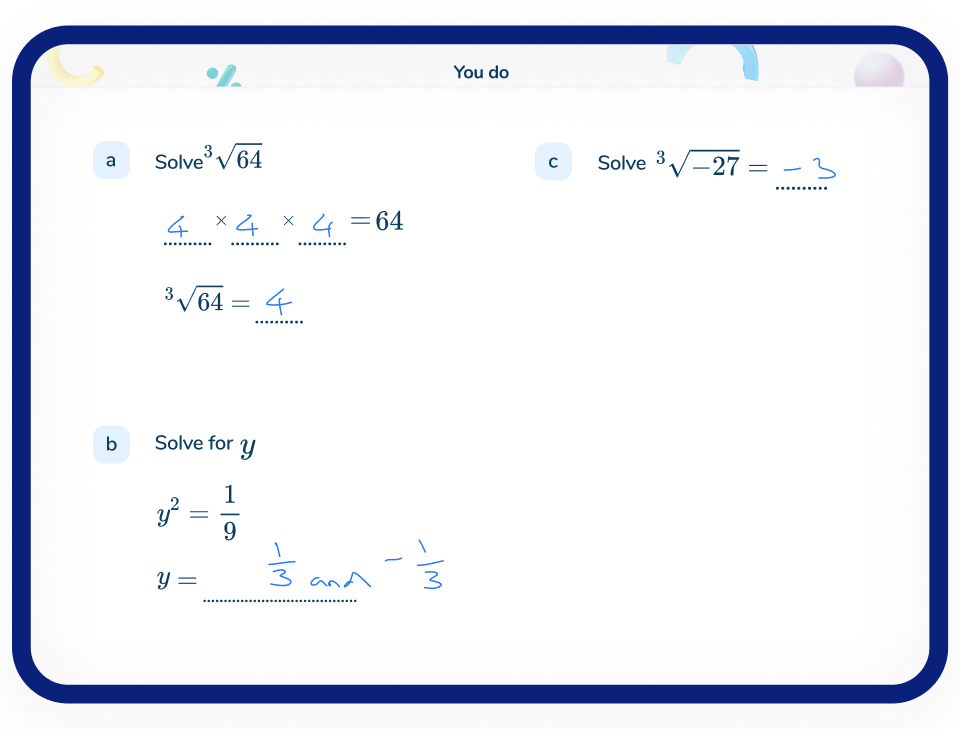
You do
A carefully sequenced next question ensures students can apply knowledge to different contexts
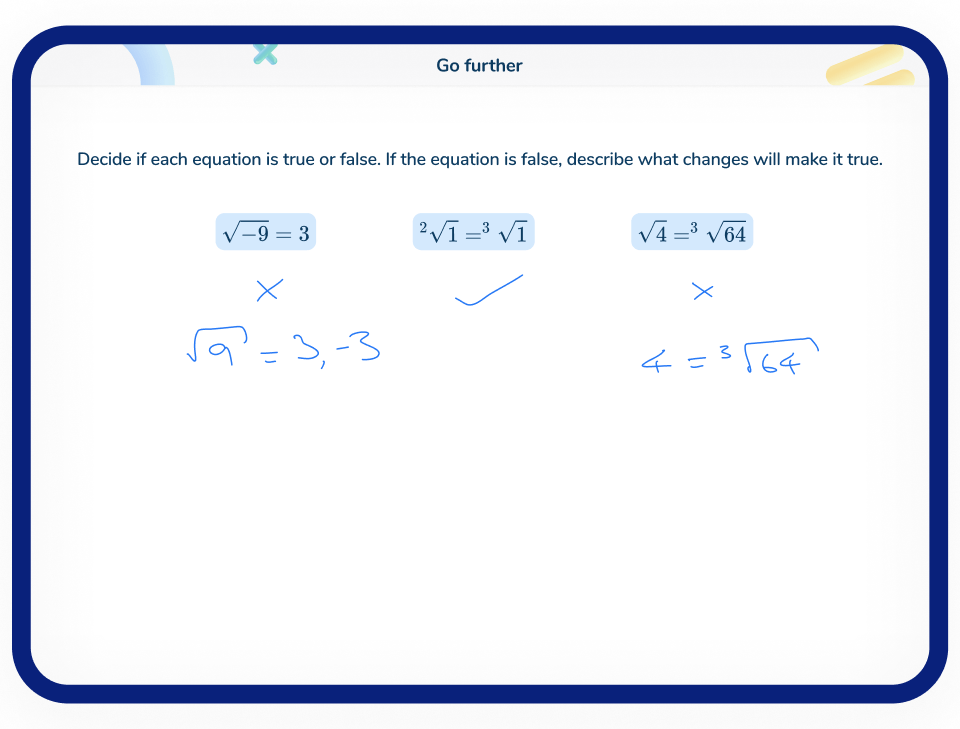
Go further
This gives students an opportunity to apply their knowledge to problem solving and reasoning questions
8th grade scope and sequence
Whether you have students who would benefit from more opportunities to practice 8th grade standards or who have existing gaps from previous grades, we’ve got a program for your 8th grade students.
Click on the program name to view the full scope and sequence.
Whether you have students who would benefit from more opportunities to practice 8th grade standards or who have existing gaps from previous grades, we’ve got a program for your 8th grade students.
Click on the program name to view the full scope and sequence.
8th Grade Program
Best for: Students with gaps from 8th grade
Programme goal: Master 8th grade standards
8th Grade Program
Learning objectives covered in this program:
Third Space Learning lessons are available for all state standards and for Common Core.
Identifying rational and irrational numbers
Approximating the value of irrational numbers
Solving with square roots and cubes
Understanding the properties of integer exponents for multiplication and division
Using properties of integers exponents with negative exponents
Understanding properties of integer exponents raised to another exponent
Understanding scientific notation
Multiplying and dividing with scientific notation
Understanding slope of proportional relationships in graphs and tables
Comparing representations of proportional relationships
Deriving the equations y = mx and y = mx + b
Solving linear equations with rational coefficients in one variable
Graphing to solve systems of linear equations
Solving systems of linear equations algebraically
Solving real world problems with systems of linear equations
Identifying functions
Comparing two functions
Identifying linear functions
Constructing an equation to model a linear function using coordinates
Describing the behavior of a function by analyzing its graph
Interpreting the context of a function by analyzing its graph
Understanding translations
Understanding reflections
Understanding rotations
Understanding dilations
Understanding compositions of transformations
Using transformations to test for congruence and similarity
Finding angles formed by parallel lines and a transversal
Finding interior and exterior angles of a triangle
Understanding the Pythagorean theorem
Understanding the converse of the Pythagorean theorem
Solving problems using the Pythagorean theorem
Using the Pythagorean theorem to calculate distance
Finding the surface area of cylinders, cones and spheres
Finding the volume of cylinders, cones and spheres
Constructing scatter plots for bivariate data and identifying the association
Informally fitting bivariate data with a line of best fit
Interpreting the line of best fit within a real world context
Reading two way tables and identifying variable percentages
Interpreting association in two way tables
About this program
Lessons focus on securing 8th grade standards to enable students to successfully move on to 9th grade.
How are lessons ordered?
The default order has been set by our academic team to align with your state standards. Schools can pick one of our alternative sequences to re-prioritize domains, or send us their assessment data for us to pick the most appropriate sequence.
Want to speak to our friendly team? Book a call.
7th Grade Program
Best for: Students with gaps from 7th grade
Programme goal: Master 7th grade standards
7th Grade Program
Learning objectives covered in this program:
Third Space Learning lessons are available for all state standards and for Common Core.
Calculating unit rates with fractions
Understanding proportional relationships
Finding the constant of proportionality in tables
Representing proportions with equations
Understanding graphs of proportional relationships
Solving percent of change problems
Solving multi-step proportion problems
Interpreting quantities that combine to zero
Adding integers using number lines
Subtracting integers using integer addition understanding
Adding rational numbers
Subtracting rational numbers
Understanding multiplying by a negative integer using a number line
Applying integer multiplication rules
Understanding integer division by using integer chips
Applying integer division rules
Multiplying rational numbers
Dividing rational numbers
Converting fractions to decimals
Adding and subtracting rational numbers with word problems
Multiplying and dividing rational numbers with word problems
Adding and subtracting linear expressions
Factoring linear expressions
Expanding linear expressions
Identifying equivalent linear expressions
Evaluating numerical expressions involving positive and negative rational numbers
Solving two-step equations
Solving two-step word problems
Comparing solutions
Solving and graphing two-step inequalities
Solving word problems with two-step inequalities
Scaling drawings of polygons
Evaluating changes in scale with perimeter and area related to scale factor
Constructing triangles
Describing cross sections of three-dimensional figures
Understanding measurements of a circle
Using formulas to solve problems with circles
Solving word problems with circles
Solving problems using angle relationships
Evaluating areas of composite shapes
Calculating volume of right prisms and pyramids
Solving real world problems with areas of polygons
Solving real world problems with volume and surface area
Understanding random sampling
Drawing inferences with sample simulations
Informally comparing graphical representations of two populations
Understanding probability of a chance event
Understanding probability through relative frequency
Calculating the theoretical probability of a simple event
Using experimental probability models for unfair events
Creating the sample space of compound events
Finding the probability of a compound event
Creating and using a simulation to generate estimations for compound events
About this program
Lessons focus on securing 7th grade standards to enable students to successfully move on to 8th grade.
How are lessons ordered?
The default order has been set by our academic team to align with your state standards. Schools can pick one of our alternative sequences to re-prioritize domains, or send us their assessment data for us to pick the most appropriate sequence.
Want to speak to our friendly team? Book a call.
6th Grade Program
Best for: Students with gaps from 6th grade
Programme goal: Master 6th grade standards
6th Grade Program
Learning objectives covered in this program:
Third Space Learning lessons are available for all state standards and for Common Core.
Defining and writing ratios
Writing and defining rate and unit rate
Comparing ratios to solve problems
Solving unit rate problems
Using tape diagrams and double number lines ratios
Solving percent problems
Using tables to compare ratios
Converting percents to fractions and decimals
Interpreting quotients of fractions (models)
Finding quotients of fractions using the algorithm
Using the algorithm for division
Adding and subtracting decimals with the algorithm
Multiplying decimals with the algorithm
Dividing decimals with the algorithm
Using models to understand the algorithm
Estimating solutions
Finding GCF of two whole numbers less than or equal to 100
Finding the LCM of two whole numbers less than or equal to 12
Rewriting numerical expressions using distributive property
Interpreting a number and its opposite through real world application
Representing and interpreting rational numbers on the number line
Writing comparison statements for rational numbers
Identifying and interpreting absolute value of rational numbers
Graphing ordered pairs on the coordinate plane
Writing and evaluating expressions with exponents
Reading and writing algebraic expressions
Evaluating algebraic expressions
Identifying and creating equivalent expressions
Using the distributive property
Combining like terms
Interpreting and writing equations
Solving one-step equations
Interpreting and writing inequalities
Solving one-step inequalities
Modeling to solve equations
Using number line to solve equations and inequalities
Identifying and analyzing independent and dependent variables
Using tables to analyze independent and dependent variables
Using graphs to analyze independent and dependent variables
Finding area of triangles
Finding area of quadrilaterals and triangles on the coordinate plane
Finding area of quadrilaterals by decomposing into triangles and rectangles
Finding volume of rectangular prisms with fractional edges
Finding the surface area of prisms and pyramids
Visualizing surface area through nets
Defining and writing statistical questions
Describing the center and spread of dot plot
Calculating mean and median
Creating box plots
Interpreting box plots
Interpreting histograms
Creating histograms
About this program
Lessons focus on securing 6th grade standards to enable students to successfully move on to 7th grade.
How are lessons ordered?
The default order has been set by our academic team to align with your state standards. Schools can pick one of our alternative sequences to re-prioritize domains, or send us their assessment data for us to pick the most appropriate sequence.
Want to speak to our friendly team? Book a call.
Book a free tutoring demo for your school or district
Explore the online classroom, preview lessons aligned to your state’s standards and see for yourself why 4,000+ schools like yours have chosen high impact one-on-one math tutoring from Third Space Learning:
Proven to accelerate math growth in half the time
2.4x cheaper than the average cost of one-on-one tutoring
Scalable and easy-to-implement across multiple grade levels and schools
Flexible scheduling according to your school and district’s needs
You can learn more about how we keep your data safe and secure in our privacy policy.
Frequently asked questions
How can I help my 8th grader with math?
To help your 8th grader achieve better grades in math, focus on their understanding of algebraic concepts, geometry and functions. Engage them with practical applications, reasoning and problem-solving exercises. Consider using online resources or an expert tutor to help with math homework and provide additional practice and guidance.
What math class should 8th graders be in?
Eighth graders are typically enrolled in pre-algebra ahead of algebra 1 or algebra 2 in high school, focusing on algebraic concepts, problem-solving skills and introducing more advanced topics like linear equations, functions, and basic geometry. The exact math class may vary based on the school’s curriculum and the student’s proficiency, but all classes should aim to prepare them for high school mathematics.
What are kids learning in 8th grade math?
In 8th grade math, students learn key algebraic concepts such as solving linear equations and inequalities, exploring functions and their graphs, and understanding the properties of exponents. They also study geometry, covering topics like the Pythagorean theorem, volume, and surface area of geometric figures and begin to explore concepts of statistics and probability to analyze data. This school year should prepare students for high school math courses.
